
 |
Eager Space | Videos by Alpha | Videos by Date | All Video Text | Support | Community | About |
|---|

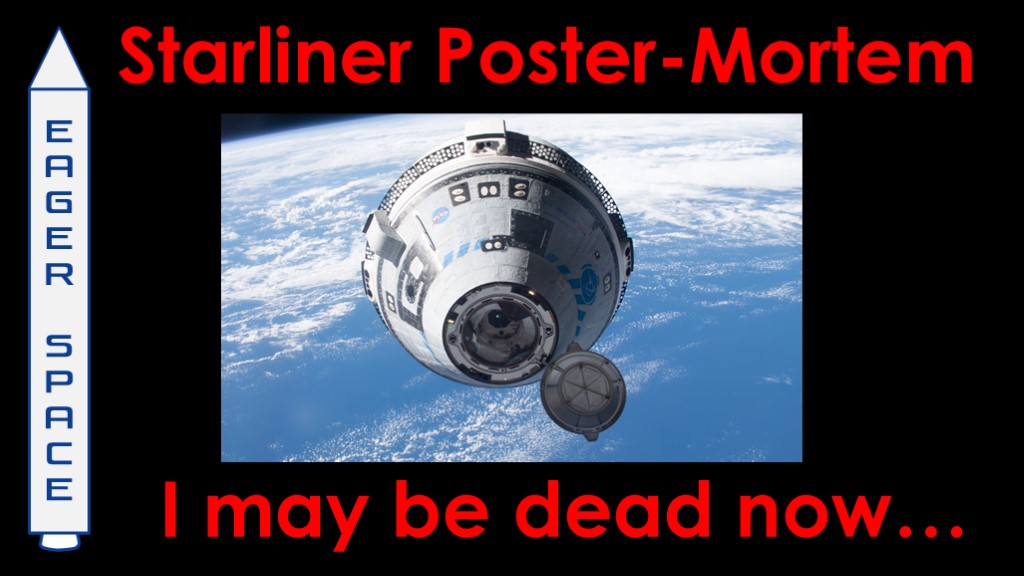
Starliner Post Mortem:
https://www.youtube.com/watch?v=JLjR23twwDE
Boeing CST-100 Starliner Crewed Flight Test (CFT): Anatomy of the Thruster Doghouse
https://www.reddit.com/r/Starliner/comments/1eiggns/boeing_cst100_starliner_crewed_flight_test_cft/
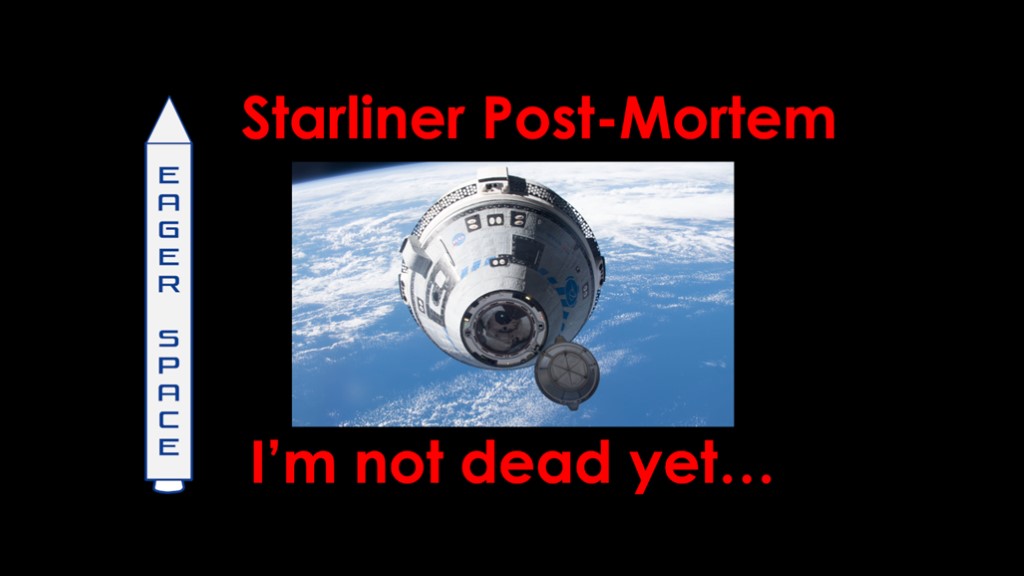
A while back I did a video on Starliner (see link in the description).
I made two major points. The first is that Starliner delays are partly the fault of Boeing, partly beyond their control.
The second was that the commercial crew contract was deliberately structured to give Boeing a big incentive to finish development and start flying flights, and that there are at least 2 billion reasons why they have kept the program going for so long.
Before we get into the current state of starliner and what the future of starliner might look like, I have some information that I need to share...

My finances are tight.
I can barely afford the coke zero and pork rinds that keep me going, much less the fresh chicharones that I prefer.
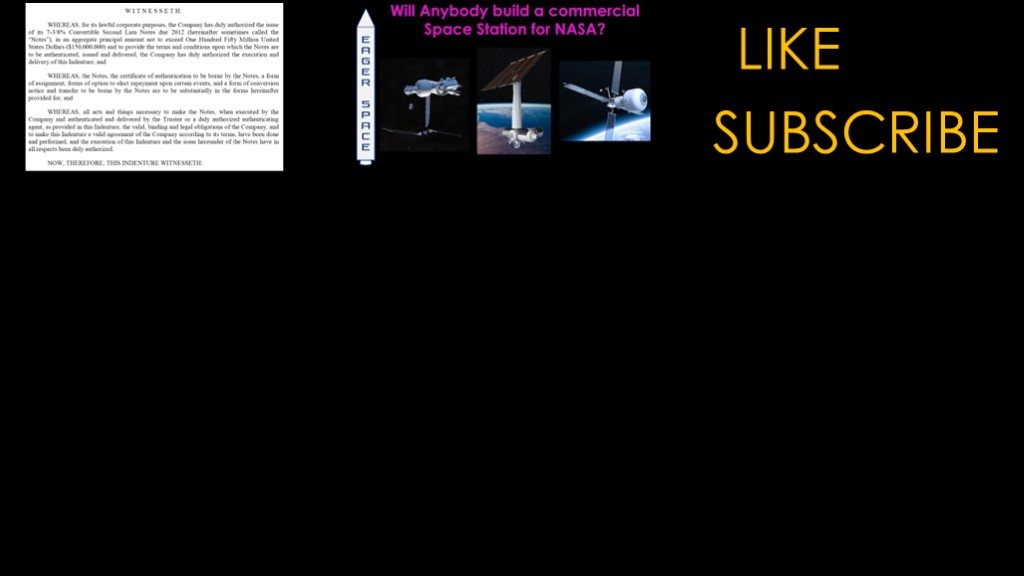
Recent responses have been less than I have hoped for.
So I propose a simple agreement. I'll promise to keep making videos, and you promise to keep doing your part. I think that's a win for both of us.
And if you chose not to, I'm not responsible for what might happen...

Thank you for your attention to that important announcement. We now return you to your original video.
This past summer, we finally saw a crew climb into a starliner capsule on top of an Atlas V, launch into orbit, and dock with the international space station.
That was great.
What wasn't great is that Boeing has clearly not fixed the issues that they had run into on earlier Starliner flights, with helium leaks and thruster failures.
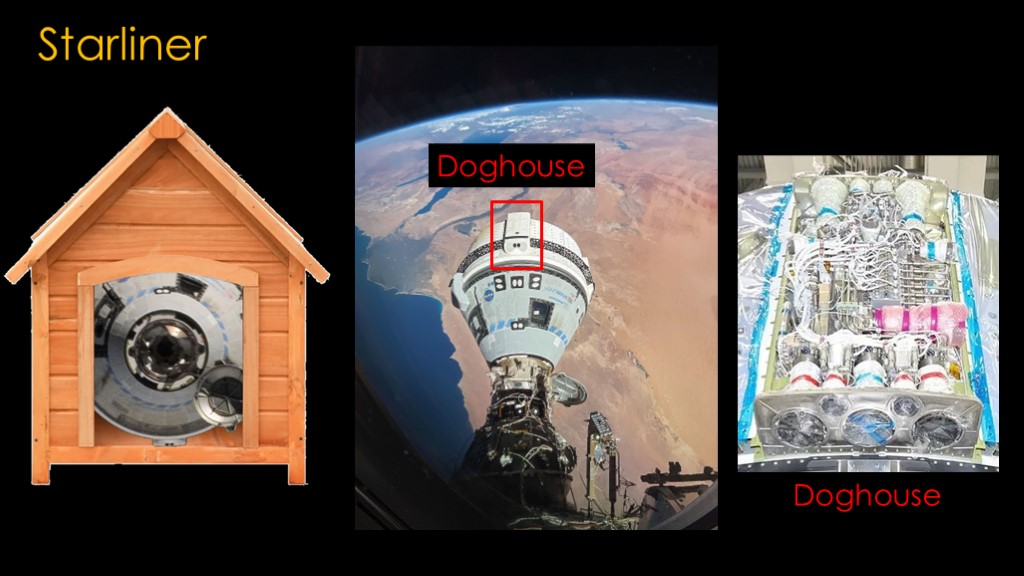
The problems put starliner in the doghouse. And the problem was with a section of the service module known as the doghouse.
There are 4 doghouses spaced evenly around the service module, and they are jam-packed with what is technically known as thruster stuff.
Why is this such a problem? It's due to a few choices made by the Starliner designers...
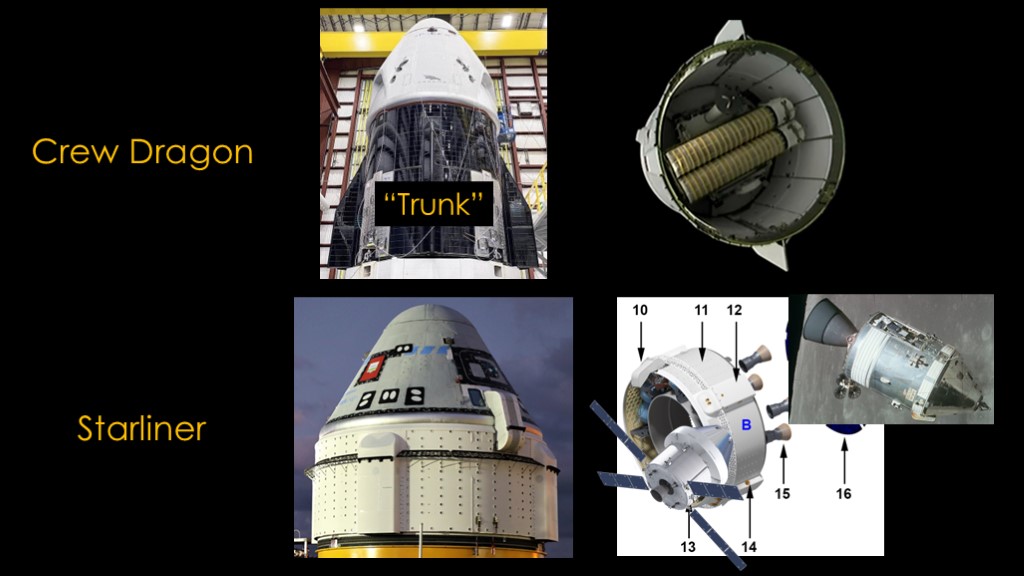
To understand these choices, it's useful to compare the two commercial crew capsules.
Both have an upper capsule part and a lower non-capsule part.
The SpaceX non-capsule part is named the trunk, and by analogy with a car it's a place that you can carry extra stuff that you can't put in the passenger compartment. For cargo dragon flights, it often carries large cargo that can tolerate the vacuum of space, such as these roll-out solar cell arrays. It's also a nice big surface for solar cells.
For crewed flights, the trunk modifies the aerodynamics of the capsule so that it remains aerodynamically stable - with the pointy end forward - during abort scenarios.
SpaceX chose to make the trunk simple because the trunk burns up during reentry and all the expensive stuff returns with the capsule to be reused.
Starliner follows the design choices made with the Apollo and Orion, with a complicated service module. That service module contains propellant tanks, abort thrusters, reaction control thrusters, and a whole lot of plumbing and valves to control them all. The solar cells are mounted on the bottom of the service module.
That choice makes it easier to design the capsule part because it shifts a lot of mass to the service module and therefore the capsule and heat shield can be smaller and lighter. But it has a significant disadvantage, one that came back to bite Boeing. With the dragon design, all of the important parts come back for analysis and inspection. SpaceX has had a couple of issues with thrusters on Dragon but has had the luxury of looking at the thrusters after the flight to identify the problem.
Most of the starliner issues after the first flight have been thruster issues in the service module, and since the entire service module burns up on reentry, there's no way to do post-flight analysis. That is why NASA kept delaying a decision for so long - they wanted to give Boeing every chance to gather more data from the misbehaving systems.
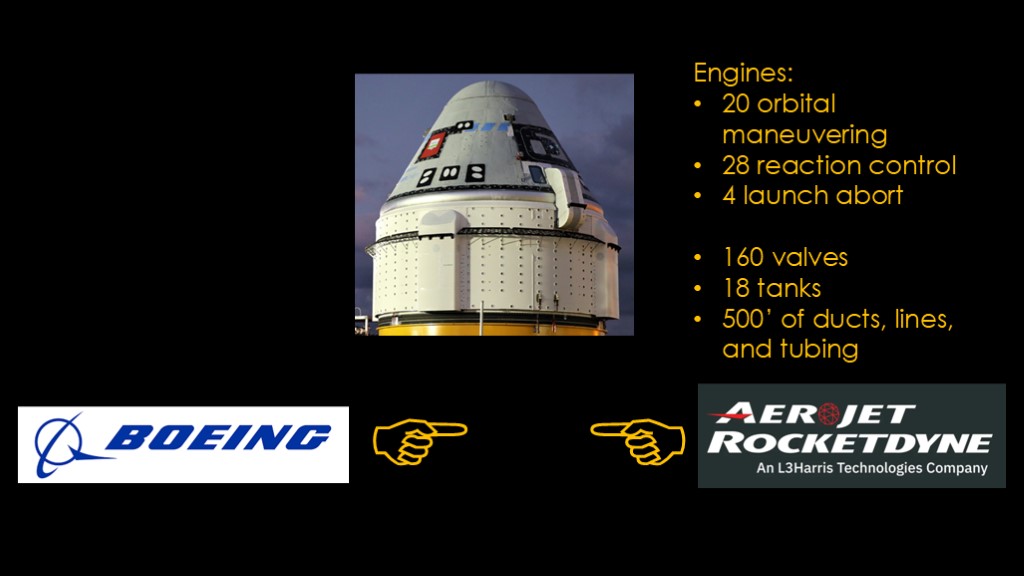
The situation is complicated by the fact that while Boeing is in charge of Starliner, the service module propulsion system is built by Aerojet Rocketdyne.
Aerojet rocketdyne supplies 20 orbital maneuvering engines, 28 reaction control engines, and 4 launch abort engines for every service module. In addition, they also supply 160 valves, 18 tanks, and 500' of ducts, lines, and tubing.
The problems in Starliner have led to a lot of finger pointing between the two companies.
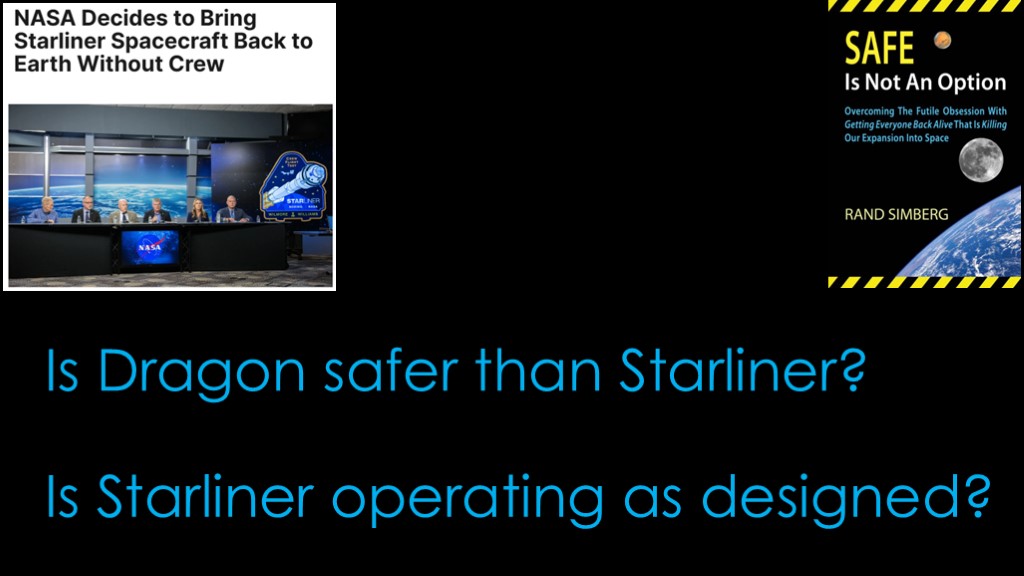
NASA ultimately decided to send starliner home without a crew on board, and the capsule landed successfully.
I've complained in the past that NASA has grown far too risk averse and pointed people to Rand Simberg's excellent ebook "Safe is not an option".
But in this case NASA made the right call. Many people asked the question whether dragon was safer than starliner, and the reality is that Dragon has significant flight heritage and Starliner does not and by definition that makes Dragon safer even if starliner was behaving perfectly. It's the wrong question to ask.
The right question to ask is whether Starliner is operating as designed, and the answer to that question is a clear "no". NASA made the right call - you simply do not put crew on a vehicle that is misbehaving unless you are really, really sure that you understand what is going on. That clearly wasn't the case here. The point of margins and redundancy in systems is to help you out when something unexpected happens, not make it okay to fly when you know there are problems.
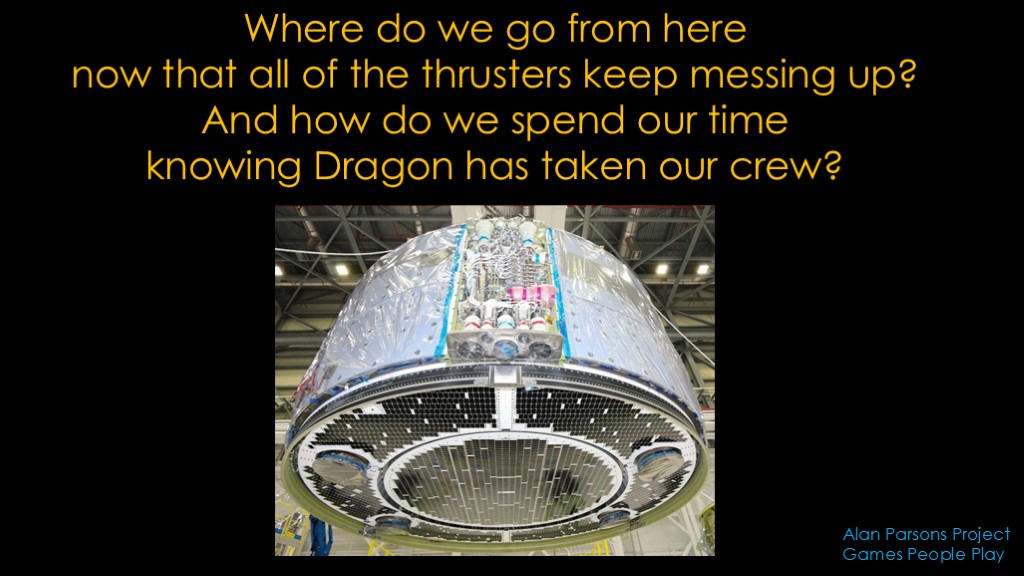
In the post mortem video, I was somewhat optimistic that Starliner might be successful.
I no longer have that optimism. The crew flight test was the third orbital flight of starliner and Boeing had 25 months to make it as perfect as they could, and they ended up with 5 helium leaks and 5 thrusters that were degraded enough the software marked them as failed.
I think that's a pretty good sign that there is a significant problem.
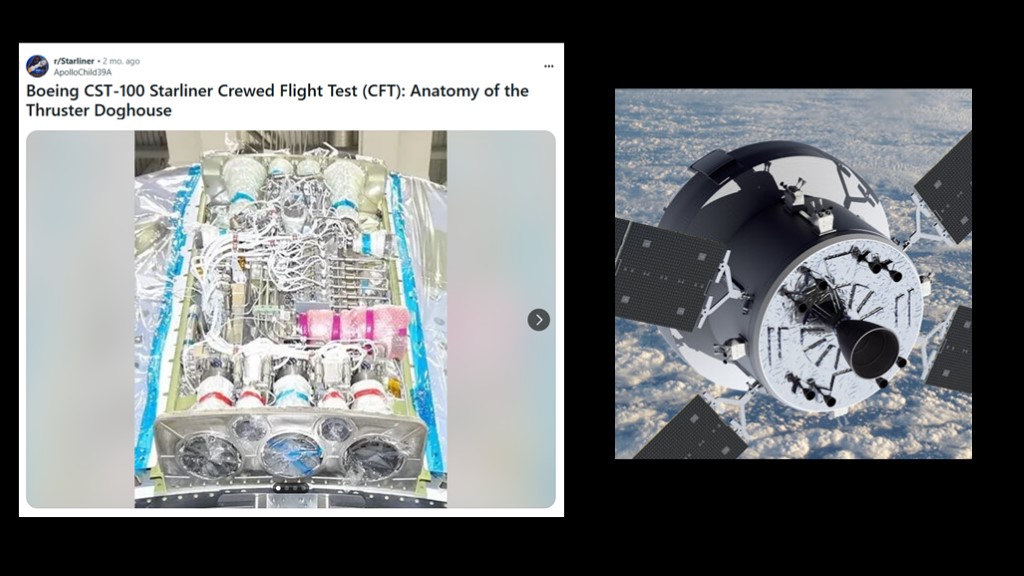
There's a good analysis of the thruster doghouse from a few months ago that asserts that the underlying problem is that the thrust doghouse overheats because the thermal analysis was done incorrectly. Link in the description.
I'm very much not a thermal engineer, but putting 11 thrusters - by my count - along with a bunch of valves and other plumbing inside a sealed box seems like a poor choice from a thermal perspective. This is also an an atypical design.
If we look at the orion service module, we see that none of the thruster bells are inside the service module.
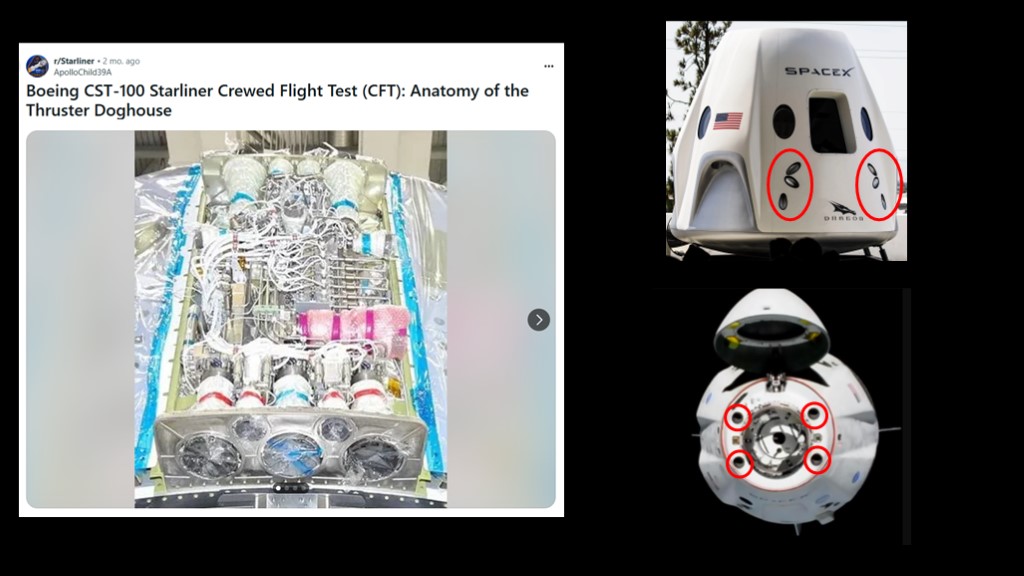
Dragon does put thrusters inside the capsule, but the RCS thrusters are in groups of 3 and spread out. The high power thrusters are under the front cover of the capsule and are spread out.
It seems likely that the doghouse design is flawed with issues didn't get caught during design review, and testing did not adequately simulate the conditions in orbit. It's not clear what might be required to fix it. It might be as simple as moving the thrusters so most of their heat-producing parts are outside the doghouse, though even a change like that would require a lot of work and retesting. Or it could be worse.
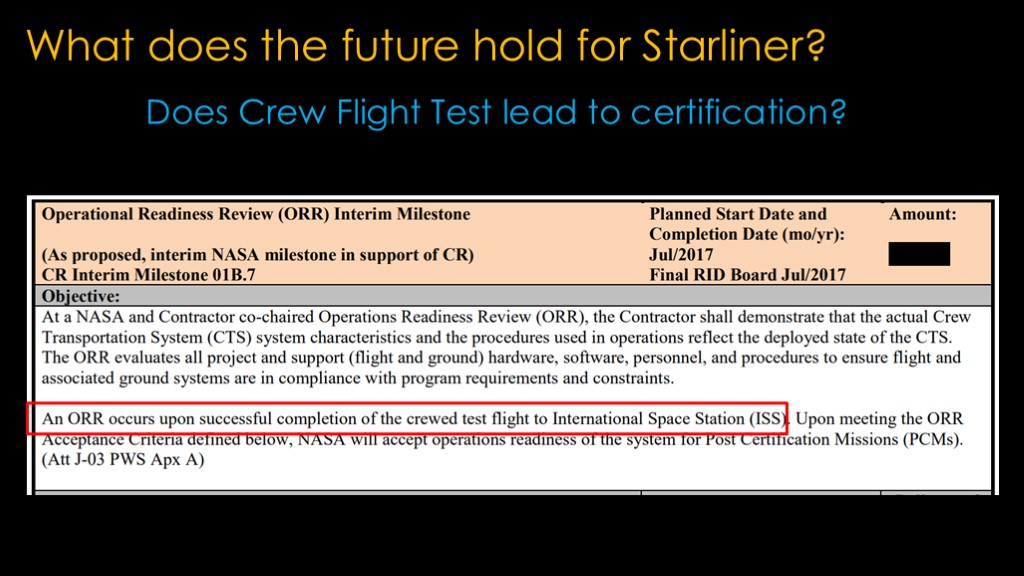
Given that background, what does the future hold for starliner?
The first question is whether the crew flight test leads to certification of Starliner by NASA.
I pulled up the Boeing contract, and found this. The first obvious question is whether carrying crew up but not down counts as successful completion of a crewed test flight. I did a bit of searching and could not find a definition for successful completion.
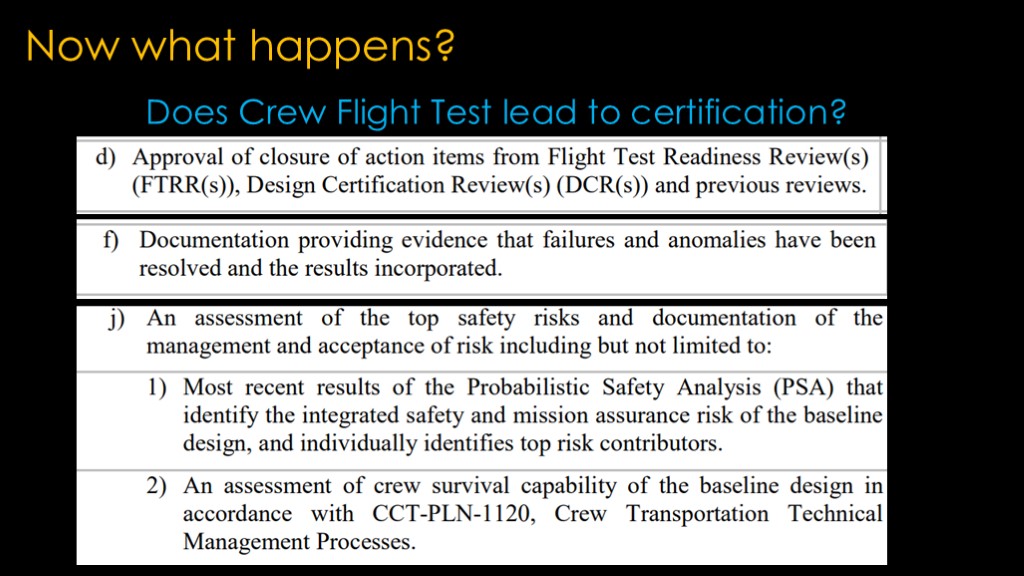
If the flight does count as successful completion, there are a few relevant requirements to achieve the operational readiness review milestone before operational flights could start.
Section d requires closing all the action items from previous reviews.
Section f would seem to require that Boeing figure out what has been going on with the thruster failures and helium leaks and provide evidence that is good enough for NASA to accept.
Section J is about the risk assessment that is required to meet the 1 in 270 loss of crew probability required by the commercial crew contract.
The crewed test flight was hoped to be a demonstration of F, that the failures and anomalies from the uncrewed test flight had all been resolved, but instead in turned out worse than the previous flights, with multiple helium leaks and the same thruster issues as before.
It's not clear what sort of evidence NASA might require in this area.
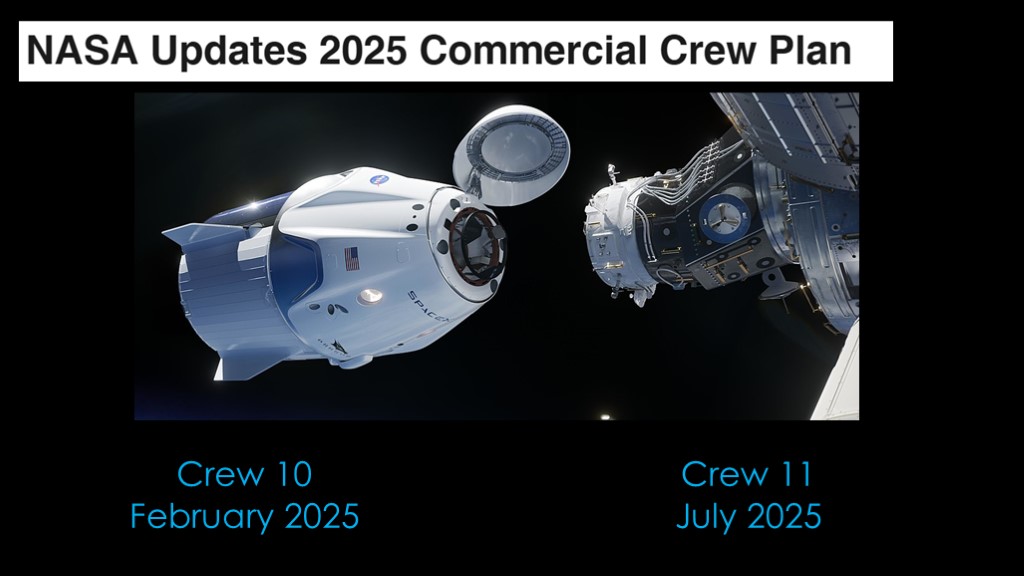
In a great example of how procrastination can work for you, NASA released a commercial crew plan update on October 15th as I was writing this section.
NASA has decided that both 2025 crew flights will be flown on crew dragon, with one flight in February and one in July.
Crew 10 was already known and crew 11 is not really a surprise.
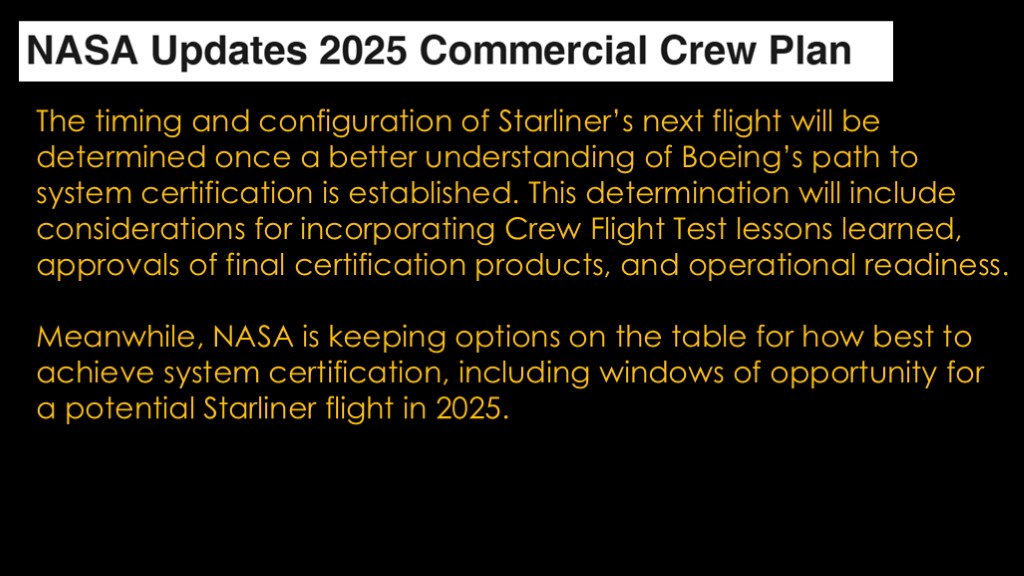
NASA also talked about the future of starliner...
(read first paragraph)
I read this as saying "we don't know enough yet to know what path Boeing will need to take to get Starliner Certified".
They also say:
(read second paragraph)
Since NASA has already awarded both 2025 operational flights to SpaceX, any starliner flight in 2025 would be a repeat certification flight. But the "options on the table" part seems to indicate that there might be a world in which Starliner could be certified without a 4th test flight.

What happens next is up to Boeing. I think there are three scenarios to consider:
The best case is that starliner can certify without reflight. Their first chance to fly an operational flight would be early 2026, which puts off the revenue they want for at least another year, though there is likely a certification completion payment. This also means they have 4 years to get in 6 operational flights before ISS is deorbited. That may cut down their potential revenue, though ISS might be extended again.
The second is that Boeing figures out what is causing the issues, implements a simple fix, and reflies the crew test flight in 2025. This is roughly the same from a program perspective except that it requires a new service module and finding another Atlas V for the launch (presumably, they could buy one that is currently allocated to Amazon Kuiper launches).
The third is that the doghouse needs a redesign to fix the issue. This is probably the worst, requiring a time consuming redesign and almost assuredly another test flight, plus a significant amount of rework to prove to NASA that the new design will do what it is supposed to do.
I generally make it a rule to avoid guessing what will happen in cases like this because it depends both on how NASA views things and how Boeing views things, and we don't really have much data about either. And it's clear that Boeing has far bigger issues elsewhere and that starliner will not make or break the company.
I've decided to make an exception in this case, with the caveat that my opinion is a poorly-justified guess.
The question is whether Boeing will continue to fund the Starliner program or whether they have had enough and cancel.
40% that Boeing stays in the program if they have a clear path to operational approval. Note that that's a clear path which means understanding what is going on, knowing what to do about it, and having a solid schedule.
15% if Boeing needs to refly a crew flight test. They really want that operational money but so far throwing money at this program has not been a recipe for success. If their fix isn't good, they could be in the same situation and a few hundred million dollars poorer.
5% if the doghouse needs a redesign. I think that puts the next flight at least 2 years out and bumps operational flights closer to the end of ISS.
My best guess is that Boeing is going to throw in the towel, but it will obviously depend on what the path to certification is.

Is it possible for Boeing to just walk away. Commercial crew is heavy on the carrot in that the operational flights can be quite lucrative, and from what I can tell it's also light on the stick; I've read the contract and I don't see any penalties for just walking away.
Boeing has so far been motivated by the prospect of that sweet NASA money and by wanting to keep their reputation intact, but commercial crew is only a sideshow when it comes to factors affecting their reputation and money to be made and I would not be surprised if they decide to just walk away.
And that's the current state of starliner.

If you liked this video, please send somebody a starliner bear.